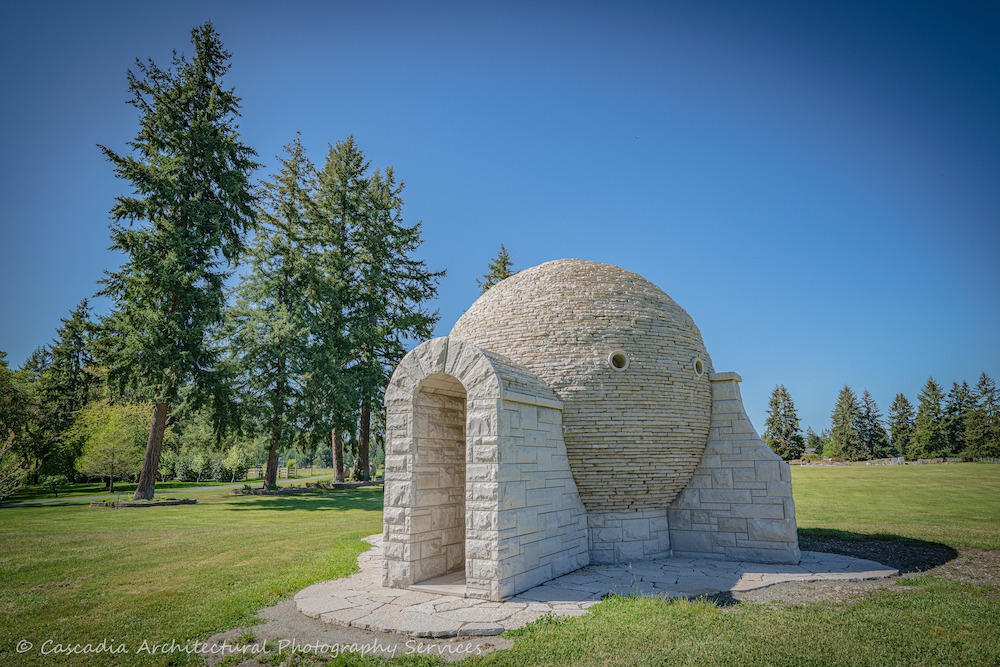Words: Nick Vaccaro
Photos: Cascadia Architectural Photography Services LLC
Those who appreciate fine architecture recognize it as an art form. Like a painter with a palette of various color shades, the different building materials serve the same purpose. They are the colors applied to the canvas. Each requires a specific skill, and its roots can be traced back to an earlier time.
When considering masonry as art, one can view it in endless formats. While the standard masonry-built home is spectacular to look at, a well-placed soldier course adds a layer of masonry appreciation. Round brick columns, variations in floor patterns, keyways, and arches all are wonderful in themselves that invoke equal amounts of thought and appreciation.
Harnessing incredible skill, Steve Borman, President of Keystone Masonry, Inc. in Yelm, Washington, embarked on a journey of masonry construction that embodies that process of fine art. Nothing could be purer than using natural elements to create a structure of beauty and engineering strength.
Pinpointing Inspiration
Borman, who has been in the masonry business for more than 44 years, includes an interesting backstory which fuels his creative fire. As a young college student, he resided in Europe, where he visited and toured all the major cathedrals on the Continent and in Britain.
“I was in awe of the vaulted ceilings and especially the domes in Italy,” said Borman. “The Pantheon, built by the Romans in 70 AD, is the oldest freestanding dome in the world.” The Pantheon is an example of masonry art.
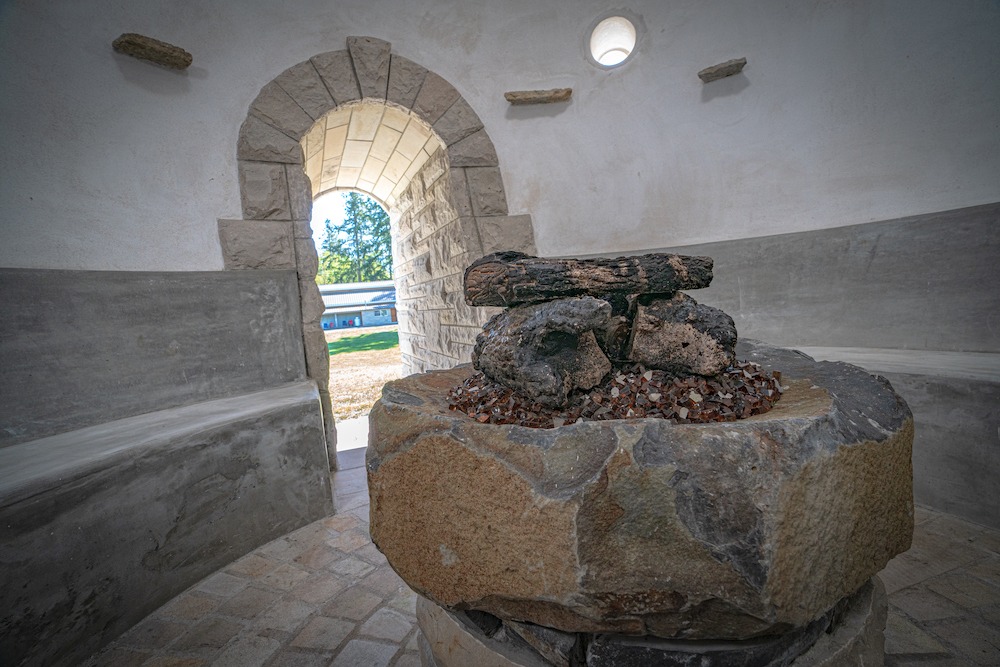
Whether it was the history, strength, or design itself, the craftsmanship catalyzed creative inspiration. Borman recognized the value in the workmanship early on.
“There are stone domes the world over which are an engineering challenge in and of themselves,” said Borman.
Drawing upon the past, Borman fabricated stone beehives on his property, representing family and community. It was here that the wheels began turning.
“The shape of these got me thinking about the concept of a complete stone sphere, albeit open on the interior to house a fireplace and seating for a large group of people,” said Borman.
Borman recounted that the project’s appeal increased because of the challenge in finding anything similar. The search proved futile, so ingenuity birthed from inspiration prevailed.
Empirical Design
Construction originates from a good plan and design. As a result, Borman sketched up his plan and began soliciting engineers for assistance.
“Engineers are quite conservative for a good reason, and each was hesitant to be involved in such a risky endeavor,” said Borman. “They were very concerned about controlling thrust.”
When he was unable to muster the engineering support needed to bring the project to fruition, Borman remained tenacious and managed the engineering portion of the project on his own using an empirical design based on experience and intuition. He indicated that the seismic zone was an initial factor to be considered.
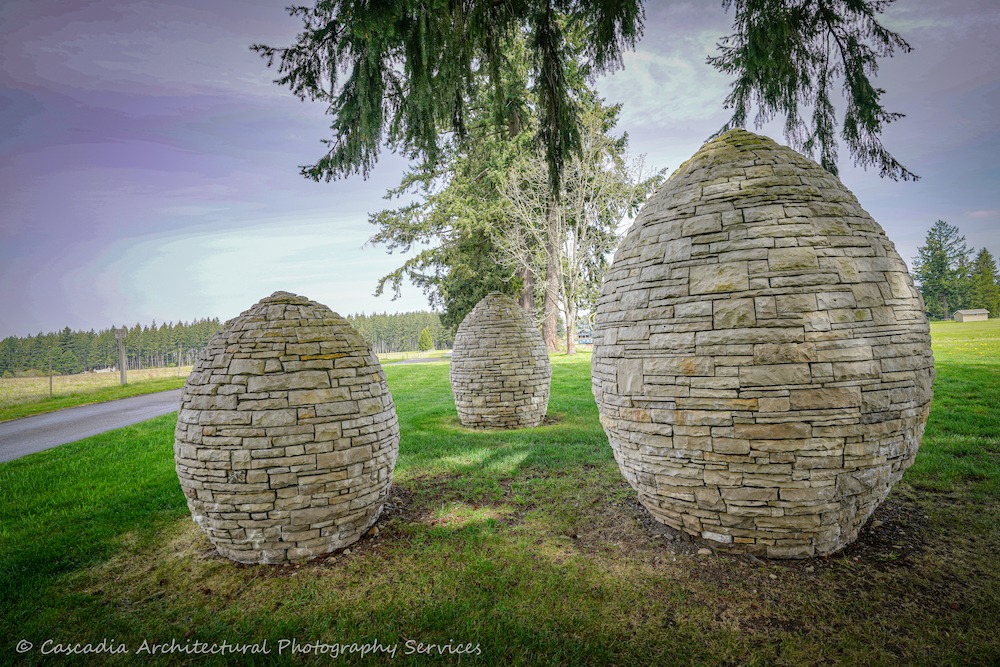
Seismic zones describe areas where earthquakes seem to concentrate. They are categorized into six distinct categories and labeled A through F. Through geotechnical engineering; soil reports provide structural engineers and architects the information necessary in making the seismic determination.
“We are in a category D seismic zone,” said Borman.
According to International Seismic Application Technologies, a category D zone refers to areas where severe and destructive ground shaking can occur, but not limited to a major fault. It further specifies that areas with poor soil structure serve as category D examples.
“After 25 years behind my desk, I decided to get my tools out and ply my trade once again on a project I had been contemplating for some time,” said Borman.
Taking a direct approach, Borman went to work. He noted that while a dome structure can control the gravitational forces of thrust using the cylindrical walls below, a complete sphere, however, also encompasses the lower half of the globe, which is vulnerable to the weight of the upper half.
“The problem to overcome is the thrust,” said Borman.
Borman’s reference to the term, thrust, represents an issue to be considered concerning masonry arches. According to brickarchitecture.com, lateral movement results from the horizontal thrust of an arch. It develops in all except the catenary arch. Science supports that the flatter the arch (the lower the camber), the greater the horizontal thrust. This force or thrust must be restrained so lateral movement does not provide a negative outcome, such as cracking in the arch or even collapse.
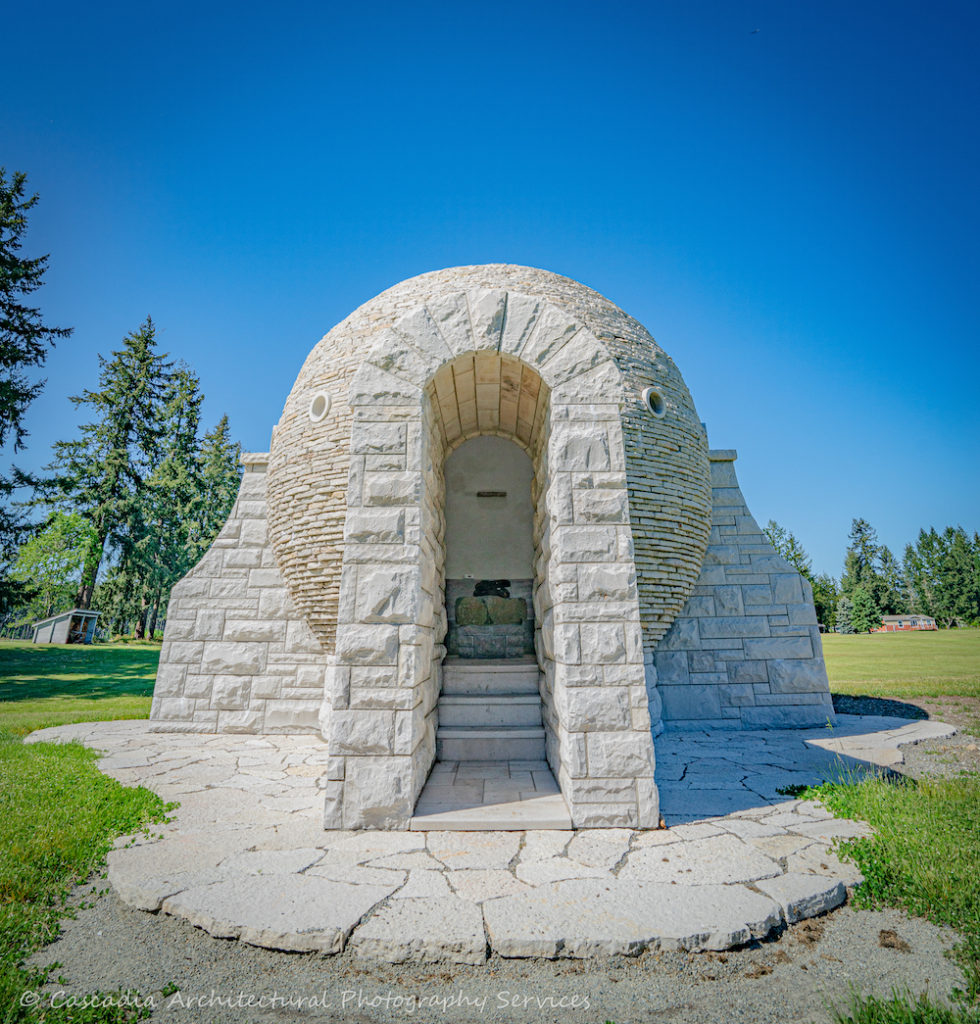
The subject’s spherical wall is 16-inches thick. It is reinforced vertically with #9 rebar elements staged every 16-inches on center at the “equator” and hooked at both the top and bottom.
The walls are then connected by horizontal reinforcing agents, which includes placement of #5 rebar located every 16-inches on the center.
The spherical portion of the build features an inner wythe constructed of brick, while flagstone was used to construct the outer wythe. The core of the wall structure is grouted with impressive 7,000-pound concrete grout.
Impressive engineering and structural wonder find envy with the “boss” ring stone at the top having the ability to absorb the upward compression. It also offers a convenient portal for long nights of stargazing.
The sphere itself measures 16-feet in overall diameter. Its gas fireplace is cylindrical, and the seating accommodates twelve adults. Surprisingly enough, Borman indicated the acoustics inside are quite amazing due to the interior space’s shape.
“The entire build took about six weeks,” said Borman. “The Ashlar pattern stonework at the plinth, the buttresses and entry are Lannon stone from Lannon, WI. The stone on the sphere is flagstone from Fond du Lac, WI. Lemke Stone from Lannon supplied all the stones.”
Borman drew upon the characteristics, knowledge, and skilled labor he provides his customers through his company to arrive at a successful outcome. An excerpt taken from the Keystone Masonry mission statement best describes the winning collaboration to accomplish the project: “Keystone Masonry, Inc. is committed to providing innovative solutions and industry-leading quality, service, and performance at a competitive price while advancing the masonry industry through the education of craftsmen, customers, designers, and policymakers.”
Company History
Detailed and complicated masonry builds are nothing new to Borman and Keystone Masonry. They are widely regarded with respect and experts in large masonry projects spanning government, military, commercial, university, and K-12 contracts while having successfully executed masonry projects totaling nearly $300 million in value.
With their ability to service historical restorations, provide custom stonework, and install structural glazed tile, their knowledge base and collective years of experience enabled them the fortitude to build Borman’s special spherical monument.
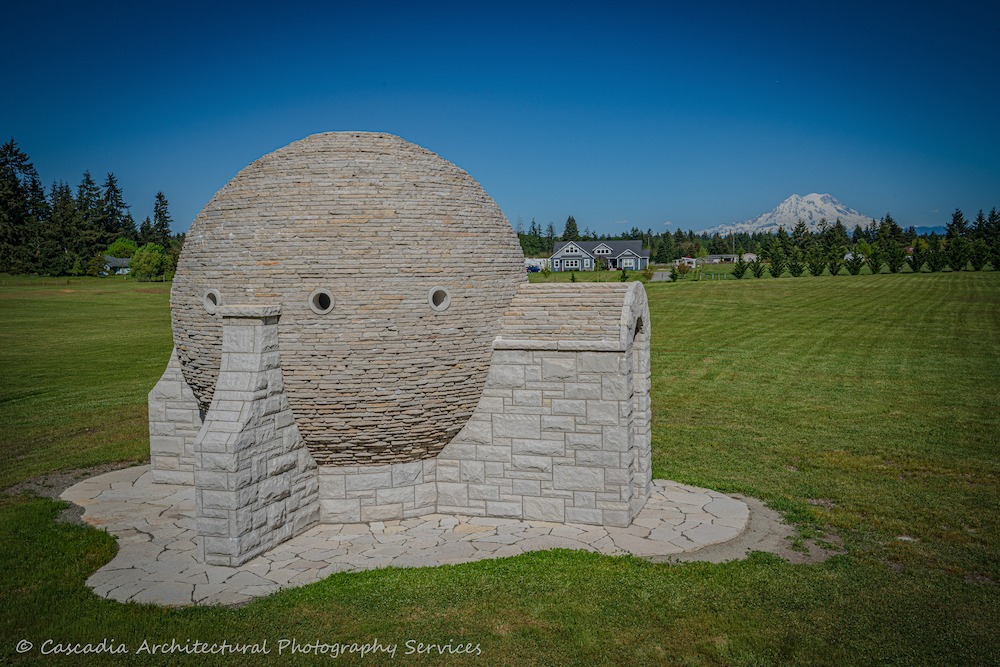
Combining that know-how with an outstanding business ethic, Borman and his team had all the tools necessary to complete the project successfully. Borman’s quote found on his company website sums it up, “One’s success is measured in the positive impact we have on family and community. The avenue which leads to this is through our work, which is measured in honesty, integrity, and quality.”
